Retailers Are Reaping the Rewards of EV Charging
When retailers, shopping centers, and malls began installing electric vehicle (EV) chargers decades ago, their decisions were largely driven by forward-looking strategies to attract and retain a growing demographic of environmentally conscious and EV-owning consumers. These early investments were often not profitable, due to low utilization. However, now that is changing.
Retailers hoped EV chargers would encourage longer stays, as customers could shop, dine, or use other services while their vehicles charged. Installing chargers allowed businesses to position themselves as sustainable and environmentally friendly, appealing to a niche but growing market of eco-conscious shoppers. Anticipating the rise of electric vehicles, retailers wanted to establish themselves as convenient destinations for EV owners, ensuring relevance as transportation trends evolved.
Collaborating with charger manufacturers or government grant programs sometimes offset costs and helped retailers experiment with the technology.
For years, however, the benefits of these early installations were unclear due to a variety of challenges. In the early days, the adoption of EVs was limited, so chargers often went unused. Installing chargers, especially Level 3 (DC fast chargers), required significant infrastructure upgrades, which strained budgets. It was difficult to quantify whether chargers drove enough additional traffic or sales to justify the expense.
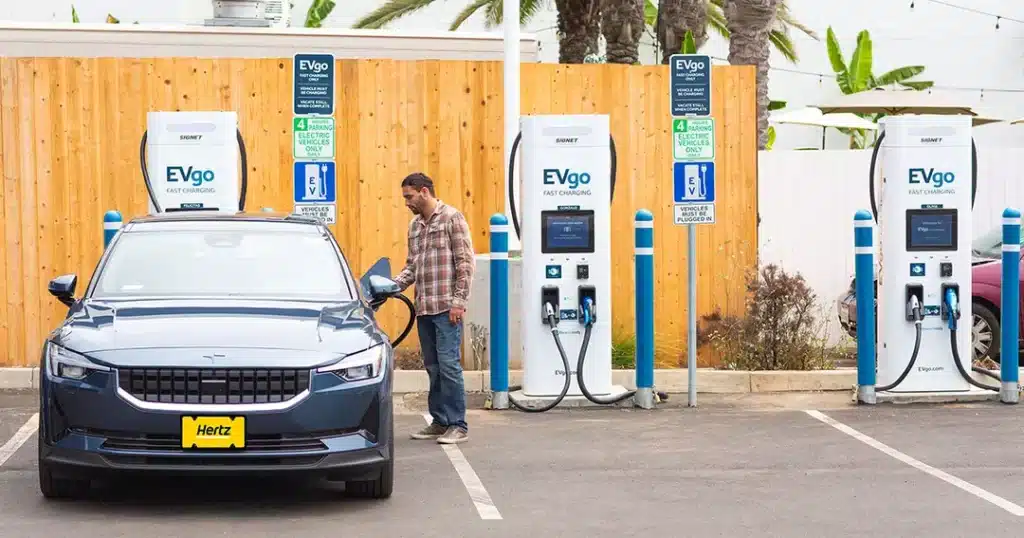
The Turning Point
The landscape started to shift with the rapid adoption of EVs, driven by lower battery costs, increased public interest in sustainable transportation, and government incentives. Retailers began to see clearer benefits.
With access to the most expansive EV charging utilization data on the market, including data from tens of thousands of chargers that have been operating for more than four years, Stable Auto observed a surge in EV charging demand. This increased demand was noticed especially at the Level 3 (DCFC) charging stations that the company monitors, and the increased demand means increased profit for station owners.
EV drivers intentionally sought out businesses with chargers, boosting overall customer visits. Some companies integrated charging into customer rewards, fostering loyalty.
Paid charging became a new source of income, and partnerships with charging networks like ChargePoint and Electrify America created opportunities for cost-sharing.
Today, EV chargers are often considered essential amenities, especially in areas with high EV adoption rates. The experience of the early adopters provided valuable insights into placement, pricing, and customer preferences, setting the stage for broader rollout strategies.
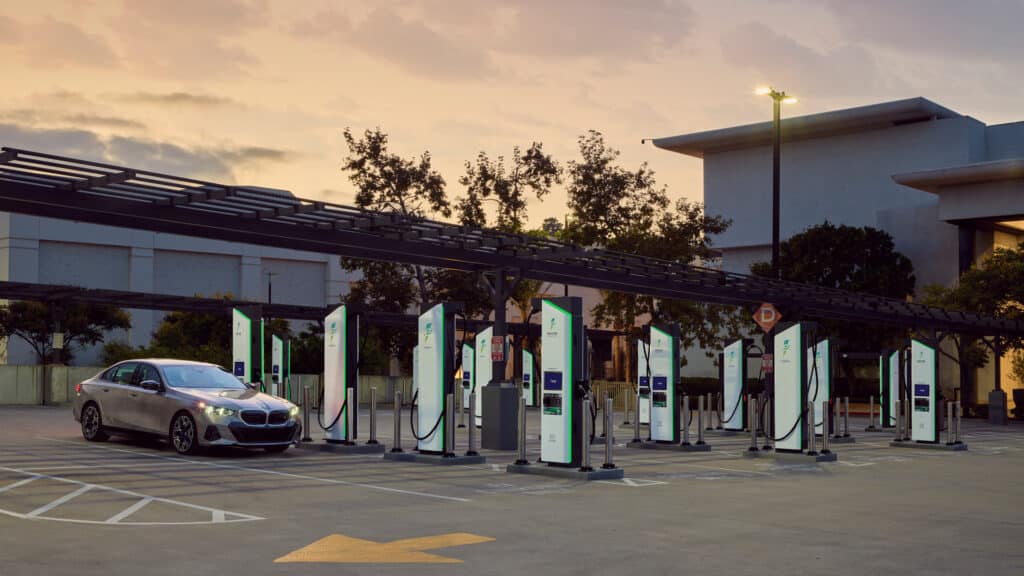
New Studies Say Retailers’ Charging Efforts are Paying Off
Recent studies suggest that retailers’ investments in EV charging infrastructure are beginning to pay off, with measurable benefits in customer visits and spending. Research from Boston University and the University of Wisconsin-Madison examined the impact of nearly 1,600 stations across more than 800 U.S. counties. The study found that retailers located within 200 meters of a station experienced a 4% increase in monthly visits, with the most significant effects observed for businesses within 150 meters. Additionally, there was a 5% rise in consumer spending, indicating that charging stations encourage not only more frequent visits but also higher spending during those visits.
Another study, published in Nature Communications, analyzed data from California, a state with widespread EV ownership and charging infrastructure. While the increases in foot traffic and spending were more modest compared to the Boston University study, public charging stations were found to attract higher-income, exploratory visitors and local residents. In low-income areas, the presence of chargers provided a noticeable boost to local businesses, demonstrating their ability to support economic growth in underserved communities.
These findings highlight the growing importance of EV chargers as economic drivers for retailers. By attracting both local residents and affluent, exploratory visitors, chargers enhance customer diversity and encourage spending. The research also underscores the importance of location, with retailers closer to chargers benefiting the most. Moreover, the positive impact on low-income areas suggests that chargers can act as tools for community revitalization. This evidence supports the idea that charging infrastructure is not just a convenience for EV owners but a valuable asset for businesses aiming to increase foot traffic, build customer loyalty, and align with sustainability goals.
Some companies, such as Walmart, are now looking at EV charging as a potentially profitable business in and of itself, and not just as a way to increase foot traffic and sales. Walmart has begun building charging stations under their own brand name, instead of than relying on providers that lease a part of their parking lots to install and maintain the stations.
“Companies are beginning to see charging as something that can potentially help the bottom line,” said Graham Evans, a director at S&P Global Mobility, an automotive market research firm. “It’s going to become more ubiquitous rather than a token gesture.”
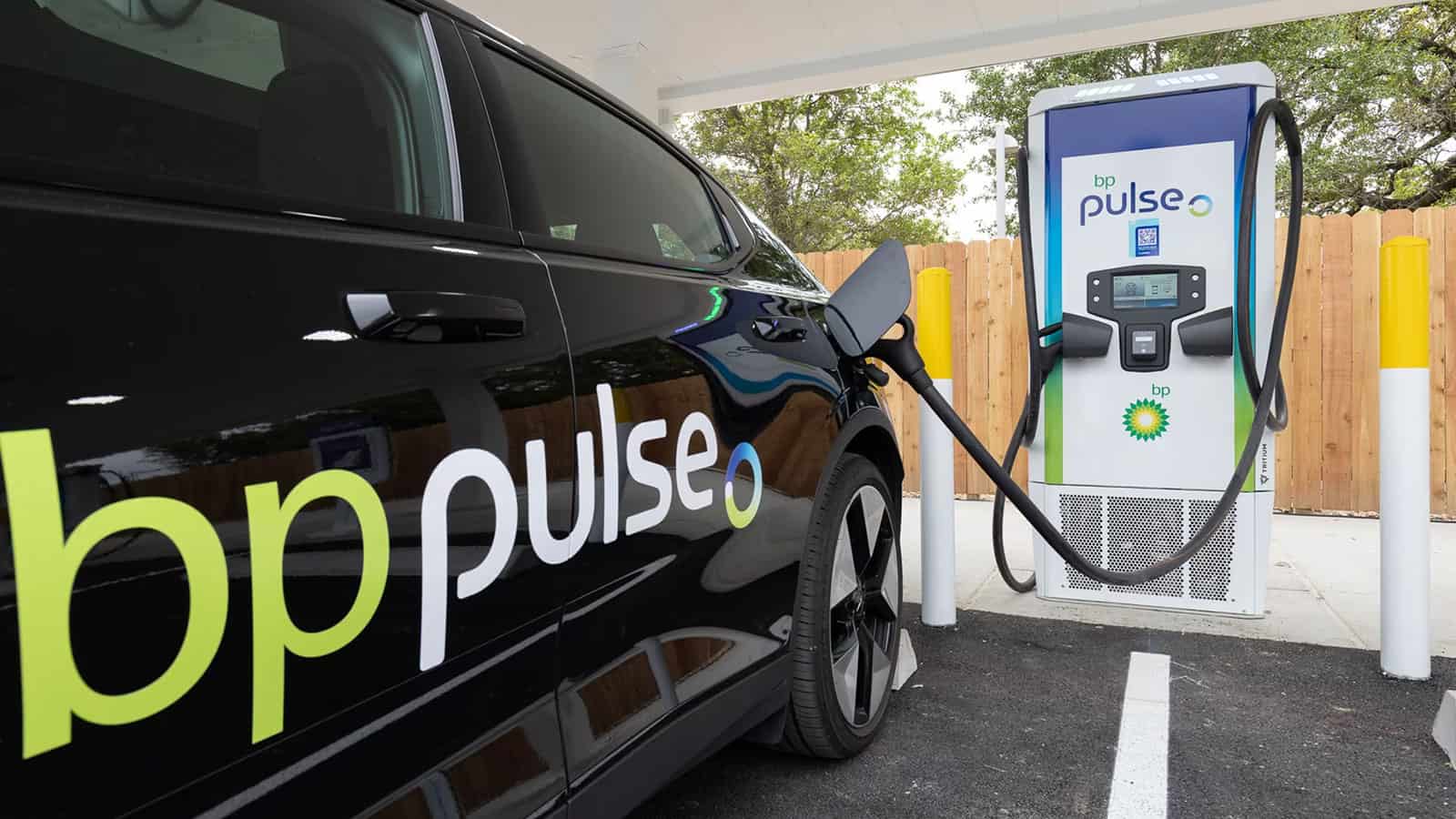
The growing adoption of electric vehicles (EVs) in the United States reflects a broader shift among Americans increasingly concerned about climate change. In 2023, EV sales reached 1.4 million, representing more than 9% of all car sales—a significant 50% increase compared to 2022, according to Argonne National Laboratory. Although the pace of growth has moderated in 2024, an estimated 346,309 EVs were sold in the third quarter alone, maintaining their nearly 9% share of the market, based on data from Cox Automotive.
This expansion underscores a transition in the automotive landscape, driven by environmental awareness and government incentives, though uncertainties remain about the potential impact of Donald J. Trump’s presidency on EV-friendly policies. During his campaign, Trump pledged to roll back the Biden administration’s initiatives supporting EV manufacturing and adoption, which could influence the market’s trajectory.
Despite rising interest in EVs, infrastructure challenges remain a significant hurdle for potential buyers. Concerns about the availability and reliability of charging stations have slowed the momentum, with many drivers hesitant to switch from gas-powered vehicles. The issue is compounded by reports of broken chargers, with recent research led by a Harvard Business School fellow finding that one in five public charging ports fails to function when needed.
Currently, over 200,000 public chargers are distributed across approximately 74,000 stations nationwide. However, researchers at the National Renewable Energy Laboratory estimate that over a million public chargers will be required by 2030 to support the expected growth in EV adoption. This gap between the demand for and the supply of charging infrastructure underscores the need for substantial investment and innovation to ensure the transition to EVs continues smoothly.
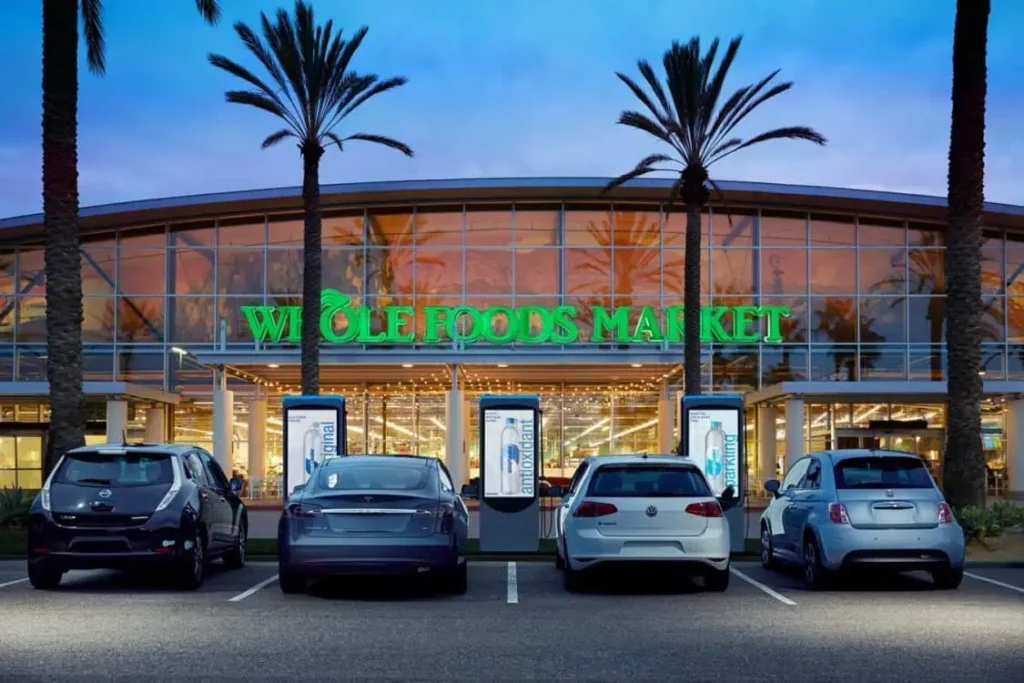
Despite the Biden administration’s $5 billion plan to address gaps in EV charging infrastructure, the creation of a robust national network remains a work in progress. As part of the initiative, states are required to submit proposals for charging operators and site hosts, shaping the distribution of funds. According to EVAdoption, nearly 60% of the grants have gone to locations such as fuel and convenience stores, rest stops, and service plazas, which play a crucial role in building out the network along highways and heavily trafficked areas.
However, the availability of chargers at key retail destinations lags behind. Consumer Reports analysis reveals that only a small fraction of such locations offer charging: one in 14 big-box stores, one in 15 grocery stores, and one in 40 department stores. This limited availability highlights the challenges of integrating charging stations into everyday consumer spaces, where they could provide added convenience for EV drivers during routine errands or shopping trips.
While the federal investment is a significant step, it underscores the scale of the effort required to make EV charging as accessible as gas stations. Expanding partnerships with retailers, incentivizing installations in high-traffic commercial areas, and addressing logistical hurdles will be essential to accelerate the development of a reliable, widespread charging network.
For retailers, the challenges of EV charging infrastructure are increasingly seen as an opportunity to cater to a growing and diverse customer base. Truck drivers, ride-hailing operators, long-distance travelers, and the EV owners without access to home charging, many of whom live in apartment buildings or park on the street, rely heavily on public chargers. According to a 2024 study by J.D. Power, retail locations are the most frequently used sites for public charging, making them critical to meeting demand.
For shopping centers and malls, chargers can also attract new tenants. Jim Hurless, a managing director at CBRE overseeing EV initiatives, noted that installing chargers has become a draw for businesses seeking properties with added amenities. However, deploying chargers is a complex and costly endeavor. The process, which includes surveying, engineering, permitting, utility connections, and inspections, can take up to 18 months. Costs range from $7,000 per slower Level 2 charger, suited to venues like cinemas and hotels where visitors stay for extended periods, to $175,000 for fast chargers capable of delivering significant power in just 20 minutes.
Many retailers outsource installation to charging companies, which typically pay a monthly fee for parking spaces while retaining revenue from charging customers. These companies are scaling up efforts to install faster, more reliable chargers and are increasingly enhancing the customer experience. Mercedes-Benz, for example, is investing $1 billion to build a high-speed charging network with lounges and landscaping at select locations. The automaker has already established hubs at a dozen Buc-ee’s gas and convenience stores in the Southeast and plans to expand to over 40 additional sites. Mercedes is also partnering with Starbucks to add 100 stations, including along Interstate 5 on the West Coast, building on Volvo’s earlier installation of chargers at Starbucks locations between Seattle and Denver.
Efforts to streamline installation are also underway. EVgo has begun experimenting with prefabricated charging systems, installing its first at a site in League City, Texas, in March 2024. At the same time, some retailers are moving to control and monetize charging directly. Convenience-store chains like 7-Eleven and RaceTrac have begun developing their own networks, seeking to capture a greater share of the revenue and integrate charging into their broader business models.
As EV adoption grows, these efforts illustrate how charging infrastructure is evolving not only to meet demand but also to serve as a strategic asset for businesses.
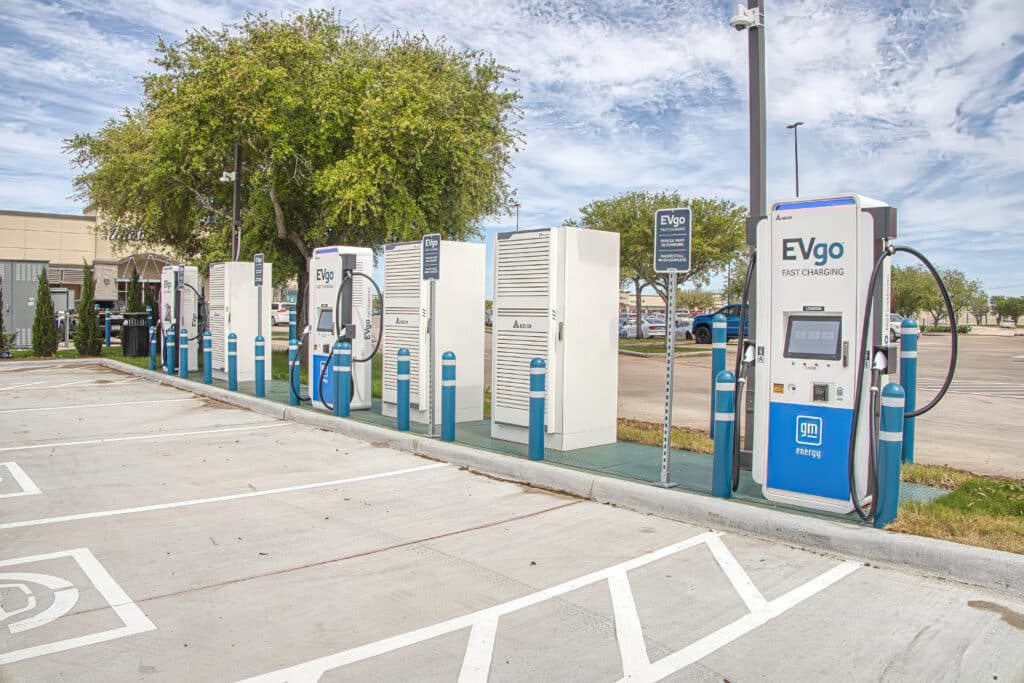
For several years, Walmart has worked with Electrify America, and now has Electrify America stations at 280 Walmart stores. When Walmart tested its own chargers at stores near its Bentonville, Ark., headquarters and in a town near Dallas, it found demand surprisingly strong, said Vishal Kapadia, Walmart senior vice president for energy transformation.
“There is a need for this infrastructure in many pockets,” said Kapadia.
Walmart is rolling out 15 stations in the Dallas-Fort Worth area and 10 in Phoenix, and it plans to have thousands across America by 2030. Walmart expects to spend $1 million to $1.5 million at each site.
“Charging can be a profitable stand-alone business,” Mr. Kapadia said. “The ancillary benefits are driving traffic to our locations.”
Costco, a pioneer in retail EV charging during the 1990s, is re-entering the space after a hiatus. Despite removing its initial chargers in 2011 due to low usage, the retailer recently installed a new station at its Ridgefield, Washington, location, completing the project in just seven weeks. This return highlights the evolving demand and opportunity for charging infrastructure at major retail sites.
Hannaford, a Northeast grocery chain, has also embraced EV charging, with stations at 24 of its 189 locations. For Hannaford, the decision aligns with its commitment to sustainability and customer engagement. As George Parmenter, the company’s health and sustainability lead, put it, the chargers serve as a “billboard” showcasing the company’s values.
While Parmenter noted the difficulty of measuring the direct impact of charging on in-store sales, the popularity of some locations is clear. A charging station at Hannaford’s Portland, Maine, store sees an average of 2,000 charging sessions each month, underscoring the growing reliance on public charging and its potential to attract foot traffic. “I don’t know what else you could do to get that many people to show up,” said Parmenter.
Brent Gruber, executive director of E.V. practice at J.D. Power, said: “Fifteen years ago it may have not made the most sense to add charging. Now it makes sense.”
Top EV charging leader AmpUp released a thought-leading article, “The Complete Guide to Electric Vehicle Charging Stations at Retail Locations,” covering types of retail charging, ROI, a revenue estimate, and more. Retailers who deploy charging stations for employees and customers can benefit from EV networking software like AmpUp, especially if offering multiple charging stations on their properties. EVinfo.net highly recommends AmpUp.

Electric Vehicle Marketing Consultant, Writer and Editor. Publisher EVinfo.net.
Services